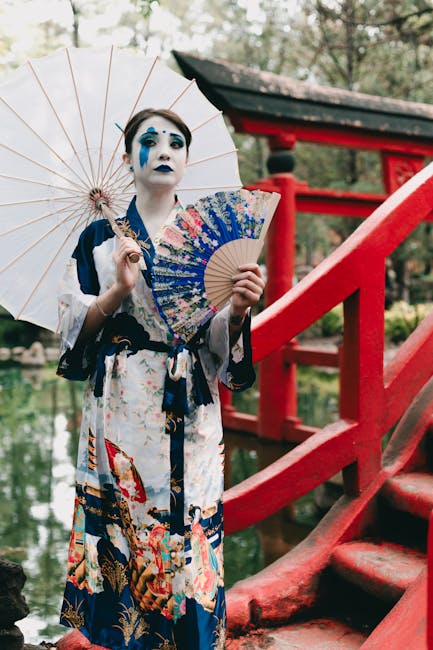Japanese red bridges, known as "aka hashiri," hold significant spiritual and cultural importance in Japanese architecture and landscape design. These structures are more than functional; they symbolize a profound connection between the physical and spiritual worlds, embodying the foundational principles of harmony and tranquility.

The color red is deeply significant in Japanese culture, primarily symbolizing protection, vitality, and good fortune. It is traditionally believed to ward off evil spirits and bring blessings, making it a common color in Shinto shrines and other sacred spaces. Red torii gates are a well-known example, marking the transition from the mundane to the sacred. Similarly, Japanese red bridges serve as symbolic thresholds between the earthly and spiritual realms, guiding individuals on their journey through nature and spirituality. This longstanding tradition is also reflected in historical structures such as the Japanese Bridge at Cranbrook, where the red color holds spiritual significance.

Japanese red bridges boast a design focus on elegance and simplicity, often seamlessly integrating with their surrounding landscapes to enhance beauty and create a peaceful environment. These features reflect the crucial aesthetic principles of Japanese architecture, which value peace and balance. The Meyer Bridge at Duke Gardens exemplifies how these designs enhance the peaceful ambiance of traditional Japanese garden landscapes. These bridges are commonly found in gardens and temple settings, reinforcing their role as conduits for spiritual practice and meditation.
In Japanese culture, crossing a red bridge is seen as a meditative act encouraging mindfulness and contemplation. It is a symbolic journey where individuals leave behind worldly concerns, entering a space dedicated to introspection and spiritual connection. These bridges play a significant role in festivals and religious ceremonies, highlighting their importance within both communal and spiritual practices. The symbolic and spiritual importance of such structures is evident in places like Red Wing Park, where Japanese garden designs are embraced.
| Aspect | Details |
|---|---|
| Color | Red, symbolizing protection and good fortune |
| Material | Typically made from wood, integrates with natural settings |
| Location | Commonly found in gardens, temples, and near sacred sites |
| Cultural Role | Used in meditative practices and ceremonies |
Japanese red bridges encapsulate essential elements of spirituality, culture, and tradition in Japanese society. Through their vibrant color and harmonious designs, they continue to inspire reverence and appreciation both within Japan and beyond, acting as a symbol of the journey beyond the physical realm to connect with deeper spiritual meanings. The profound influence of these bridges can also be seen in Western art, such as Claude Monet's depiction of the Japanese Footbridge, showcasing their aesthetic and spiritual significance across cultures.
In exploring the spiritual essence of Japanese red bridges, I hope you've uncovered new layers of meaning and appreciation for these stunning architectural icons. If you're as fascinated by design and culture as I am, why not continue the journey and join our vibrant community? Dive into our beautiful collection of architectural inspirations on Pinterest or get an insider look at our latest projects and behind-the-scenes peeks by following us on Instagram. For lively discussions and updates, don't forget to look us up on X (formerly Twitter) or join the conversation over on Facebook. We’re always eager to connect with fellow enthusiasts and share the beauty of our architectural world. Looking forward to seeing you there!

Immerse yourself in architecture’s most boundary-pushing ideas—where innovative home improvements meet visionary urban developments. Discover new building techniques, materials, and creative concepts that are redefining how we shape our spaces on a global scale.